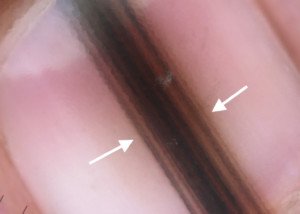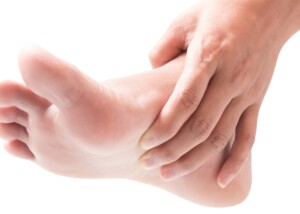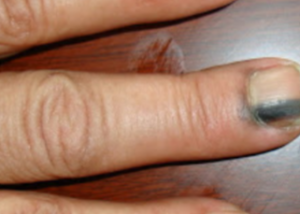
There are certain parts of the body that melanoma is more likely to grow in blacks and other dark skinned individuals.
People with dark skin are not immune to melanoma, especially since this skin cancer has risk factors not related to sun exposure, the ability to tan or how much natural pigment a person has.
Though blacks and other people of color can and DO get melanoma, this doesn’t mean that the parts of the body where it most likely occurs is the same as it is in whites.
Places Where Melanoma More Likely Occurs in People of Color
“Lower extremity lesions are more common among non-white groups, as are acral lentiginous lesions,” says Neelam Vashi, MD, Assistant Professor of Dermatology, Boston University School of Medicine, and Founder and Director, Boston University Center for Ethnic Skin.
“Acral lentiginous melanoma [ALM] is the deadliest type of skin cancer. These lesions typically appear on the palms of the hands and soles of the feet.”
These areas in dark skinned people may be quite fair, but remember, this location for a primary melanoma tumor is much more likely in non-Caucasians.
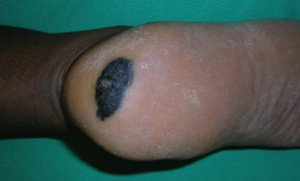
Acral lentiginous melanoma in a 30-year-old black woman. Source: basicmedicalkey
Another more common location of melanoma in blacks is the subungual type, which is actually a subtype of ALM. This potentially deadly tumor begins growing underneath a fingernail or toenail.
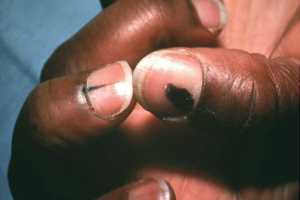
It’s not actually IN the nail, but rather, in the nail bed beneath the nail. It usually appears as a thin line or streak, progressing to thicker so that it resembles a stripe or band, running the vertical length of the nail.
Warning Signs of ALM – Whether White, Black, Brown or Olive Color
There are different kinds of melanoma, and ALM is the most dangerous – affecting people of ALL color at the same rate.
However, ALM is the most common form of melanoma in blacks and other dark populations.
This commonality is in reference to other forms of melanoma in dark skinned people, not the total number of all types of this cancer.
ALM can arise from a pre-existing mole on the palm or sole of the foot, or from seemingly nowhere, as well as begin under a nail.
• A change in a pre-existing mole on the palm or sole of the foot.
• A new mole-like lesion on the palm or sole of the foot.
• A new patch-like lesion on one’s palm or sole.
• A new brown or blackish line, streak or stripe in a nail that’s not related to trauma such as new tight shoes.
• A new streak in nail that causes damage to surrounding nail tissue.
If you notice any of these changes, you are NOT less likely to have ALM if you’re of any particular skin color. Have a dermatologist check the spot as soon as possible.
As mentioned, ALM is the deadliest of all melanoma types. Researchers believe this is because it goes unnoticed, delaying diagnosis.
Even people who do monthly self-skin exams have been known to bypass the bottoms of their feet and fail to check their toenails for newly developing dark lines. And the fingernail streak is often dismissed.
Men are more likely than women to have a thick tumor at the time of diagnosis.
One can easily suppose this is because women, more so than men, regularly catch a view of the bottom of their feet or their toenails – either directly when rubbing on lotion, trimming toenails or painting them, or indirectly when shaving around their ankles.
If you’re dark skinned, check your entire body and especially the palms of your hands, bottoms of your feet, and all of your nails every month for suspicious signs that may mean melanoma, especially the acral lentiginous type.
And if you’re very light skinned, do the same!
 Dr. Vashi is a recognized leader in medical and cosmetic dermatology in the care of patients with skin of color. She currently has many active projects including skin hyperpigmentation, chemical peels and sun protection.
Dr. Vashi is a recognized leader in medical and cosmetic dermatology in the care of patients with skin of color. She currently has many active projects including skin hyperpigmentation, chemical peels and sun protection.
 Lorra Garrick has been covering medical, fitness and cybersecurity topics for many years, having written thousands of articles for print magazines and websites, including as a ghostwriter. She’s also a former ACE-certified personal trainer.
Lorra Garrick has been covering medical, fitness and cybersecurity topics for many years, having written thousands of articles for print magazines and websites, including as a ghostwriter. She’s also a former ACE-certified personal trainer.
.

